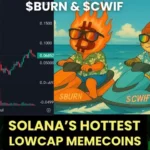
Best Metaverse Crypto Projects in 2025: Why $BLOK Could Explode
Introduction
The metaverse is no longer a futuristic concept—it’s the next evolution of the internet, blending gaming, decentralized finance (DeFi), digital identity, and virtual ownership. For investors, the metaverse crypto projects offers a unique chance to get in early on projects poised to redefine how we interact online.
In this article, we compare three leading metaverses crypto projects—The Sandbox, Decentraland and Bloktopia,—focusing on their prices, market caps, and investment potential.
The Sandbox
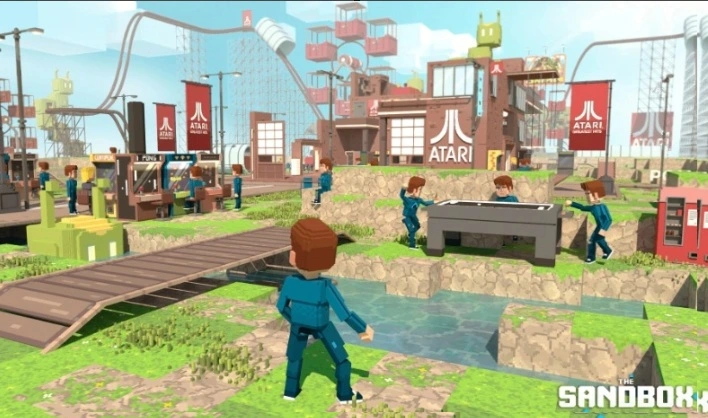
The metaverse is no longer a sci-fi dream—it’s a thriving digital frontier where gaming, creativity, and blockchain technology converge. At the forefront of this revolution is The Sandbox, an Ethereum-based metaverse project that combines voxel-style gaming, non-fungible tokens (NFTs), and virtual land ownership into a decentralized, user-driven ecosystem. Powered by its native $SAND token, The Sandbox is often likened to a gamified, blockchain-powered version of Roblox or Minecraft, but with a critical twist: real-world economics, digital ownership, and a creator-centric economy.
Built on Ethereum and now leveraging Polygon for scalability, The Sandbox empowers users to create, play, and monetize their experiences using intuitive tools like Game Maker and VoxEdit. It’s a platform where imagination meets opportunity, attracting everyone from casual gamers to global brands.
Since its acquisition by Animoca Brands in 2018, The Sandbox has grown into one of the most established metaverse projects, boasting over 2 million registered users and a market cap that ranks it among the top metaverse platforms. Its vibrant ecosystem thrives on user-generated content, high-profile partnerships, and a robust NFT marketplace, making it a beacon for creators, investors, and brands alike. In 2025, as the metaverse market is projected to grow toward a staggering $814.7 billion by 2028, The Sandbox is well-positioned to capture a significant share, driven by its entertainment-first approach and evolving use cases.
Why The Sandbox Stands Out
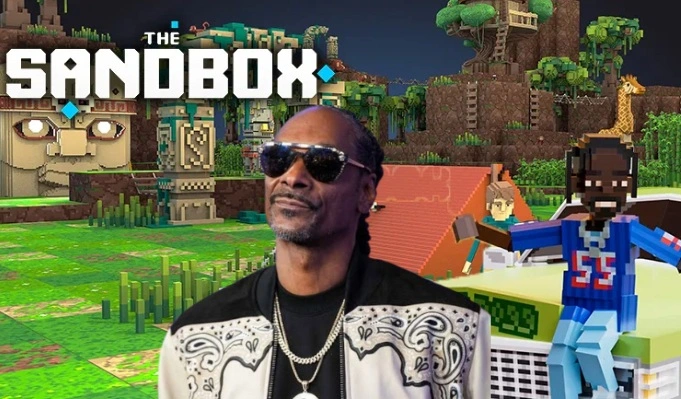
The Sandbox’s success hinges on its ability to blend accessibility, creativity, and economic incentives into a cohesive metaverse experience. Here’s a deeper look at what sets it apart:
1. High-Profile Partnerships and Mainstream Appeal
The Sandbox has built an enviable roster of partnerships that bridge the gap between Web3 and mainstream culture. Global brands like Adidas, Gucci, Warner Music Group, McDonald’s, The Walking Dead, and Atari have purchased virtual LAND plots to create immersive experiences, from virtual stores to concerts and branded games. Celebrities like Snoop Dogg, Paris Hilton, Deadmau5, and even cultural icons like Elvis Presley have established virtual estates, with Snoop’s “Snoopverse” hosting virtual concerts, art exhibitions, and more. For instance, in 2021, an NFT collector paid $450,000 to own virtual land next to Snoop Dogg’s metaverse mansion, highlighting the frenzy around premium virtual real estate.
Recent developments in 2025 further underscore its mainstream pull. The Sandbox partnered with Deepak Chopra to launch a gamified virtual zen garden, “Oasis of Quantum Consciousness,” as part of its Alpha Season 5, bringing mindfulness to the metaverse. Additionally, a collaboration with Jurassic World introduced dinosaur-themed gameplay, allowing players to hatch and collect NFT-based dinosaurs, with a $1 million reward pool and 50 collectible wearables. These partnerships not only drive user engagement but also signal The Sandbox’s ability to attract diverse audiences, from gamers to wellness enthusiasts.
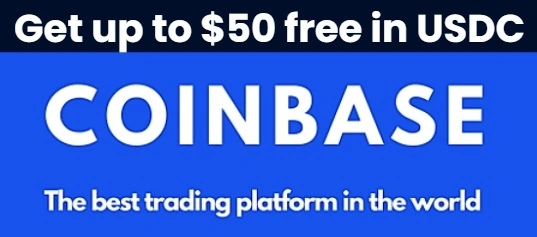
Compared to Bloktopia, which focuses on crypto education and networking within a 21-floor virtual skyscraper, The Sandbox’s entertainment-driven approach casts a wider net. While Bloktopia targets crypto builders and investors with a niche, crypto-centric vision, The Sandbox appeals to a broader demographic, including gamers, brands, and casual users. This mainstream appeal gives The Sandbox a competitive edge in user acquisition, though Bloktopia’s lower market cap ($7.44M vs. The Sandbox’s $618.05M) suggests greater upside potential for early investors.
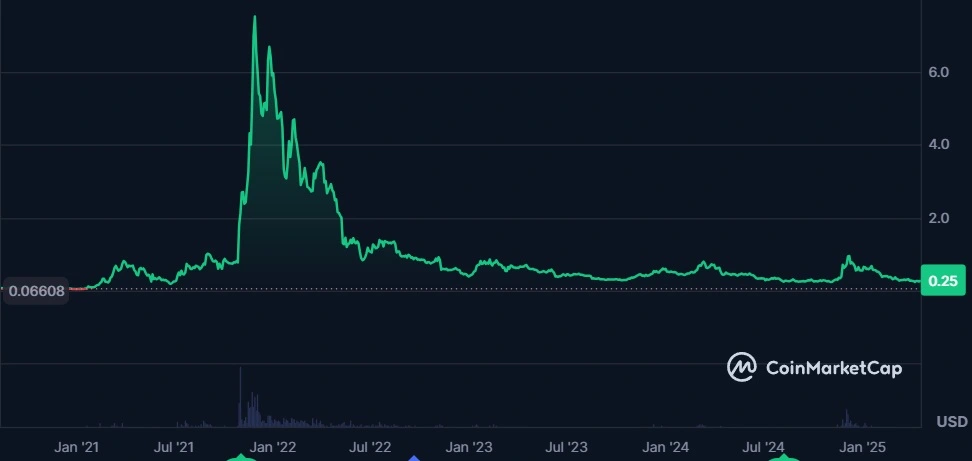
2. Creator-Centric Tools and User-Generated Content
At its core, The Sandbox is a platform for creativity, empowering users to build games, experiences, and assets without needing advanced coding skills. Its Game Maker software allows anyone to design and share 3D games, while VoxEdit enables the creation of voxel-based NFTs, such as avatars, items, or decorations. These tools democratize content creation, making The Sandbox accessible to artists, developers, and hobbyists alike. Users can monetize their creations on The Sandbox’s NFT marketplace, now integrated with Polygon for lower fees and faster transactions.
The emphasis on user-generated content (UGC) is a key differentiator. Unlike Decentraland, which focuses on social events and virtual real estate, The Sandbox prioritizes gaming and interactive experiences. Its Alpha Season 5, launched in 2025, introduced new gameplay mechanics, social hubs, and play-to-earn opportunities, building on the success of Season 3 in 2022, which featured collaborations with Gucci and Tony Hawk. The Sandbox also incentivizes creators through initiatives like Game Jam, where builders compete to publish innovative games on LAND NFTs, often using assets from brand partners like Snoop Dogg or Ubisoft.
In contrast, Bloktopia focuses on virtual real estate (REBLOK) and advertising (ADBLOK) rather than gaming, offering passive income streams like staking (up to 60% APY) but lacking The Sandbox’s robust creator tools. While Bloktopia’s model appeals to investors seeking rental income, The Sandbox empowers creators to build and monetize directly, fostering a more dynamic ecosystem.
3. Virtual Real Estate and NFT Economy
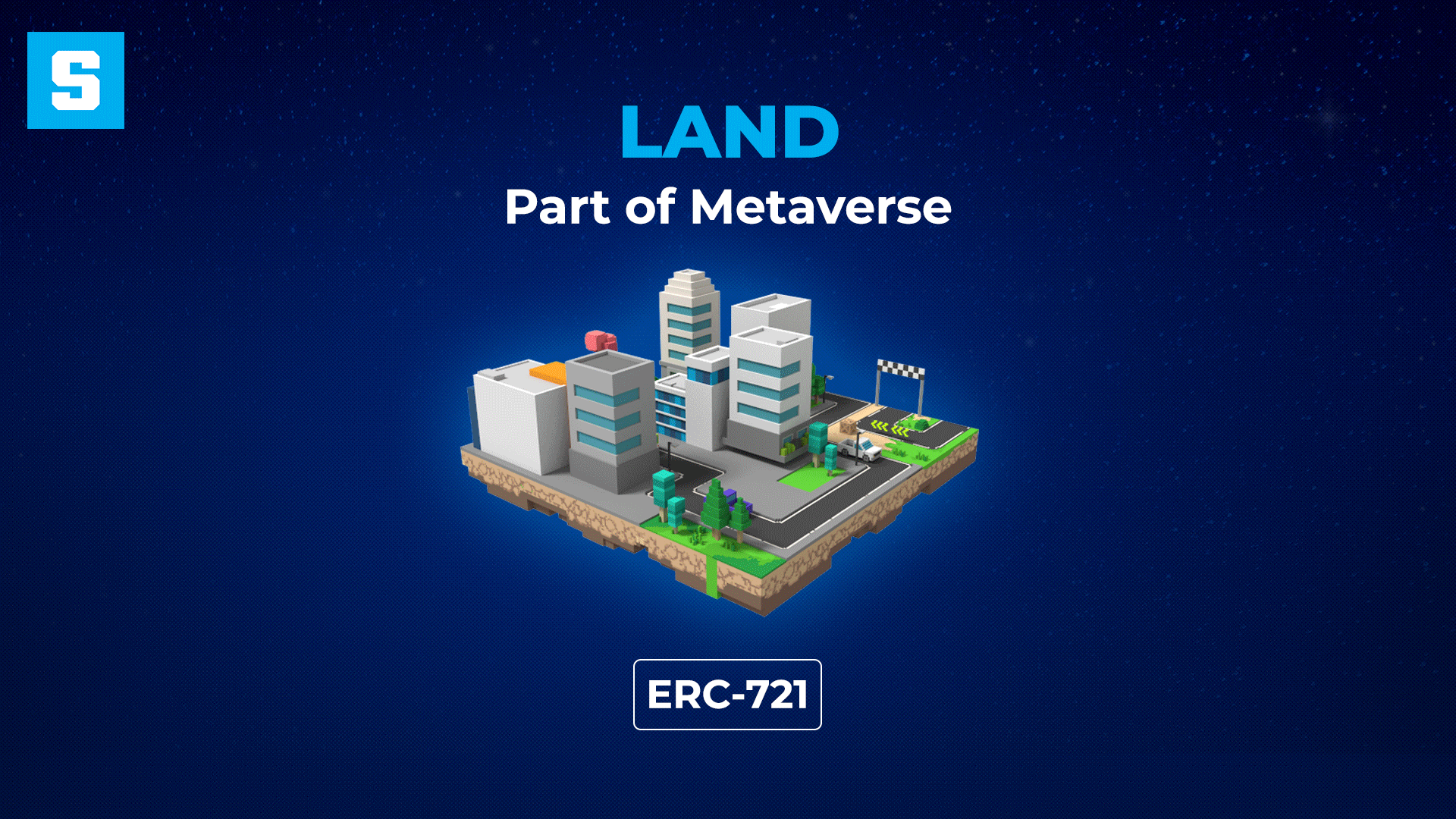
Virtual LAND plots, tokenized as NFTs, are the backbone of The Sandbox’s economy. These plots, which users can buy, develop, and monetize, have driven significant investment, with over $167M in LAND market cap reported in 2023. While LAND prices have fallen from their 2022 peak (from 3.9 ETH or $11,700 to 0.08 ETH or $300 today), the market remains active, with brands and creators snapping up plots for events and games. For example, Hong Kong University of Science and Technology and Hong Kong Design Institute purchased LAND in 2023 to develop educational experiences, signaling new use cases beyond gaming.
The $SAND token, an ERC-20 token, fuels the ecosystem, used for purchasing LAND, assets, GEMS (to define NFT rarity), and more. Unlike Bloktopia’s $BLOK, which primarily supports real estate and staking, $SAND has broader utility, including governance and in-game transactions. However, $SAND’s higher market cap ($618.05M) and price ($0.2490) reflect a more mature project, while $BLOK’s low price ($0.0003004) and market cap ($7.44M) offer greater speculative upside.
4. Evolving Use Cases and Interoperability
While gaming remains its core, The Sandbox is expanding into new domains. Its 2025 roadmap includes a mobile version, enhanced creator tools, and new social features, backed by a $20M funding round at a $1B valuation. Partnerships with Unstoppable Domains and Smobler enhance its Web3 credentials, while the Clay Nation NFT bridge between Cardano and Polygon showcases its push for interoperability. These moves position The Sandbox as a versatile platform, complementing rather than competing with projects like Bloktopia, which focuses on crypto-specific use cases.
Recent news highlights its adaptability. The Sandbox’s collaboration with Drecom to bring the Wizardry franchise to the metaverse and its purchase of 111 LAND NFTs for community rewards demonstrate a commitment to growth. Unlike Illuvium, which targets hardcore gamers with its RPG focus, The Sandbox’s voxel aesthetic and low barrier to entry make it a social and creative hub, akin to a digital playground.
The Sandbox’s Position in the Metaverse Ecosystem
The Sandbox has carved out a distinct identity as the leading gamified metaverse, blending voxel-style aesthetics with user-generated content, virtual land ownership, and mainstream brand integrations. Its strengths lie in its accessibility, vibrant community, and ability to attract both crypto natives and traditional audiences. With over 400 partnerships, including cultural institutions like The British Museum and franchises like Attack on Titan, The Sandbox is a cultural and commercial juggernaut.
Future Outlook and Investment Potential
In 2025, The Sandbox is poised for growth as it rolls out its mobile version, enhances creator tools, and launches a DAO for community governance. Its focus on interoperability, evidenced by the Cardano-Polygon NFT bridge and partnerships like Unstoppable Domains, positions it for broader Web3 adoption. The metaverse’s projected growth to $814.7B by 2028 further bolsters its long-term prospects.
You can buy $SAND at Coinbase.
Decentraland: The Pioneering Metaverse Redefining Digital Ownership
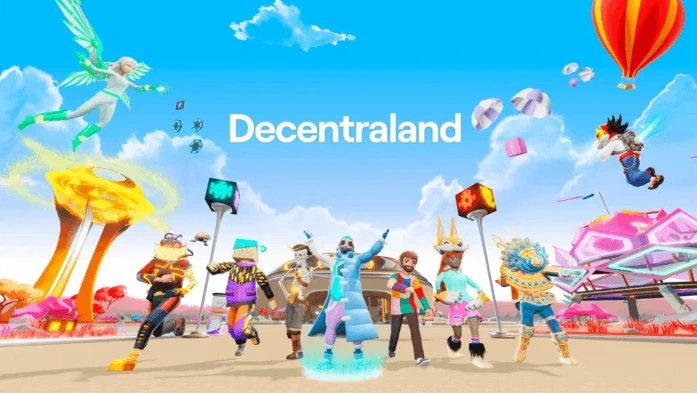
Decentraland holds a unique place in the metaverse landscape as one of the first blockchain-based virtual worlds to capture global attention. Launched in February 2020 after years of development, this Ethereum-based platform allows users to purchase virtual land, create interactive experiences, and engage in a fully decentralized 3D environment. Powered by its native $MANA token, Decentraland is more than a game—it’s a community-owned ecosystem where creativity, commerce, and governance converge. As an “OG” metaverse, it laid the groundwork for virtual economies and remains a cornerstone of Web3 innovation in 2025.
At its core, Decentraland is a decentralized virtual reality platform where users can explore, socialize, and build on a grid of virtual land parcels, each represented as a non-fungible token (NFT). The world is divided into 90,601 LAND plots, each measuring 16×16 meters in the virtual space, which users can purchase using $MANA, an ERC-20 token. These plots can be developed into anything from art galleries and casinos to virtual offices and music venues, limited only by the creator’s imagination and technical skills. The platform’s open-source nature and browser-based accessibility make it easy for users to jump in without specialized hardware, though a crypto wallet like MetaMask is required to interact fully.
Decentraland’s defining feature is its community-driven governance. The platform is controlled by a Decentralized Autonomous Organization (DAO), where $MANA holders vote on policies, land auctions, and feature updates. This ensures that Decentraland remains free from centralized control, aligning with the ethos of Web3. Users can also stake $MANA to earn rewards or use it to purchase in-world goods, services, and NFTs, creating a vibrant digital economy. The platform’s commitment to decentralization has attracted a loyal user base, even as newer metaverses emerge with flashier graphics or gameplay.
Why Decentraland Stands Out
1. First-Mover Advantage and Name Recognition
As one of the earliest metaverse projects, Decentraland enjoys significant brand recognition. Its 2017 initial coin offering (ICO) raised $24 million, and its public launch in 2020 marked a milestone in blockchain-based virtual worlds. High-profile events, such as virtual concerts by Deadmau5, art exhibitions with Sotheby’s, and brand activations by Samsung and Coca-Cola, have cemented its status as a cultural hub. For instance, Decentraland hosted the Metaverse Fashion Week in 2022, showcasing virtual designs from brands like Dolce & Gabbana, a feat that highlighted its appeal to mainstream industries.
This first-mover advantage has made Decentraland a go-to platform for brands and creators seeking to establish a presence in the metaverse. Its virtual real estate market remains active, with premium LAND plots near popular areas like Genesis Plaza commanding high prices. In 2021, a single plot sold for $2.4 million worth of $MANA, underscoring the platform’s economic potential. Even in 2025, Decentraland continues to attract corporate interest, with companies exploring virtual offices and marketing campaigns.
2. A Hub for Diverse Experiences
Decentraland’s versatility is one of its greatest strengths. The platform supports a wide range of activities, from social gatherings to professional events. Users can visit virtual casinos, attend live music performances, explore NFT art galleries, or participate in conferences. For example, the Australian Open hosted a virtual tennis tournament in Decentraland, blending sports and gaming, while JPMorgan opened a virtual lounge to engage clients in Web3. These use cases demonstrate Decentraland’s ability to cater to diverse audiences, from gamers and artists to businesses and educators.
Creators can build experiences using Decentraland’s Scene Builder and SDK (Software Development Kit), which allow for custom 3D scenes, interactive games, and animations. While the platform’s graphics—often described as blocky or retro—may not rival the polish of newer metaverses built on engines like Unreal Engine 5, they prioritize accessibility over high-end visuals. This trade-off enables Decentraland to run smoothly on standard computers, broadening its reach. Users can also monetize their creations by charging entry fees, selling NFTs, or leasing LAND, creating opportunities for passive income.
Economic and Governance Model
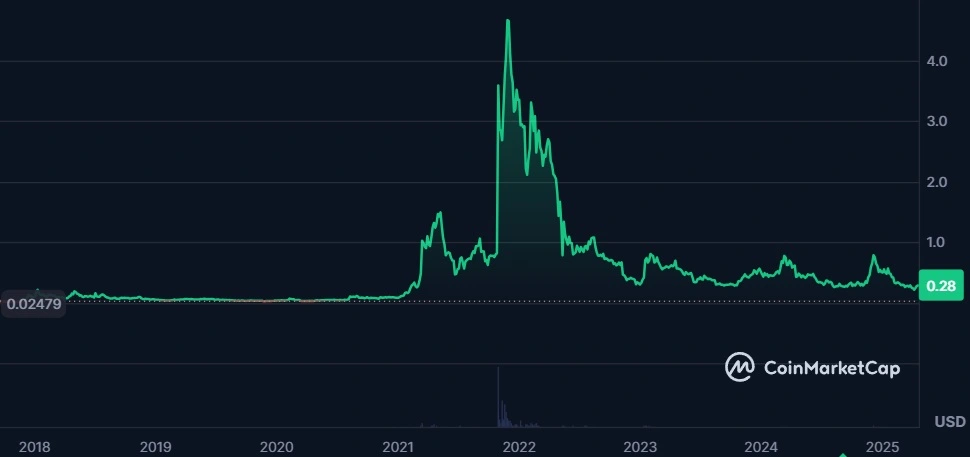
The $MANA token is the lifeblood of Decentraland’s economy, used for purchasing LAND, avatars, wearables, and services. As of recent data, $MANA has a market cap of approximately $526.67M, with a circulating supply of 1.94B tokens out of a total of 2.19B. The token’s price, around $0.2711, reflects moderate volatility, with a 24-hour trading volume of $46.14M. Beyond transactions, $MANA holders can participate in the DAO, proposing and voting on updates like content moderation, feature additions, or LAND auction rules. This governance model empowers the community to shape the platform’s future, fostering a sense of ownership.
Decentraland’s NFT marketplace, integrated with platforms like OpenSea, allows users to trade LAND, wearables, and other assets seamlessly. The platform also supports wearables, customizable NFT accessories for avatars, which have become a popular way for users to express identity. Events like Wearable Contests encourage creators to design unique items, further enriching the ecosystem. The combination of LAND ownership, $MANA transactions, and NFT trading creates a robust economic framework that mirrors real-world markets.

Challenges and Current Landscape
Despite its pioneering status, Decentraland faces challenges in 2025. Critics often point to its graphics, which feel dated compared to visually stunning competitors. The blocky aesthetic, while intentional for accessibility, can deter users accustomed to high-fidelity experiences. Additionally, user engagement has reportedly declined in recent years, with some estimates suggesting daily active users dropped from a peak of 10,000 in 2022 to a few thousand in 2024. This dip may reflect competition from newer metaverses with more immersive gameplay or social features.
To address these challenges, Decentraland has rolled out updates to improve performance and user experience. The Decentraland Desktop Client, launched in 2023, reduced lag and enhanced visuals, while mobile compatibility is in development for 2025. The DAO has also approved initiatives to incentivize creators, such as grants for building high-quality experiences and partnerships to host more events. For example, the Metaverse Music Festival in 2024 drew thousands of attendees, showcasing Decentraland’s ability to remain relevant through cultural moments.
The Future of Decentraland
Looking ahead, Decentraland is focused on expanding its utility and user base. Plans for 2025 include improved VR support, cross-platform integrations, and tools to simplify content creation for non-technical users. The DAO is exploring ways to integrate DeFi protocols, such as lending or staking pools, to enhance $MANA’s utility and attract investors. Partnerships with educational institutions and nonprofits, like virtual classrooms or charity events, could also broaden its appeal beyond entertainment.
Decentraland’s first-mover advantage, community governance, and diverse use cases ensure it remains a key player in the metaverse. Whether you’re an artist showcasing NFTs, a brand hosting a virtual event, or an investor betting on virtual real estate, Decentraland offers a platform to explore the possibilities of Web3. Its $MANA token, vibrant economy, and open-world ethos continue to inspire creators and dreamers in the ever-evolving digital frontier.
Bloktopia: The Crypto Tower
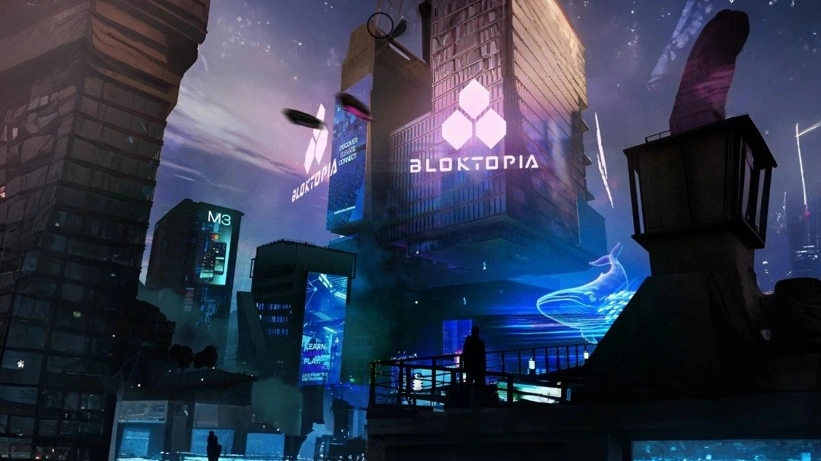
Bloktopia isn’t just another metaverse — it’s a bold digital frontier, a 21-floor skyscraper built entirely on the Polygon blockchain that redefines how we connect, learn, invest, and own in Web3.
The first time I stumbled across Bloktopia, something clicked. It didn’t feel like a game. It felt like a glimpse into the future — a towering metaverse skyline pulsing with opportunity, powered by $BLOK and driven by real crypto adoption.
A 21-Level Symbol of Bitcoin’s Legacy
Bloktopia’s skyscraper design isn’t random. Each floor represents 1 million of Bitcoin’s total 21 million supply — a symbolic tribute to the king of crypto. But this isn’t just symbolism. Each floor hosts real businesses, events, education hubs, and investment opportunities, all tailored to the crypto community.
Whether it’s an NFT gallery, a live DeFi AMA, or a crypto exchange’s showroom — every floor is alive with potential. This isn’t passive metaverse wandering. It’s active participation in the next financial revolution.
Built on Polygon — Fast, Scalable, Eco-Friendly
Under the hood, Bloktopia runs on Polygon, a layer 2 scaling solution that offers blazing-fast, low-cost transactions — a major step up from the clogged chains of old. That means users can buy virtual real estate, move funds, and explore without friction. It’s clean, cheap, and optimized for scale.
You can find the BLOK token on Kucoin.
Powered by $BLOK — The Heart of the Economy
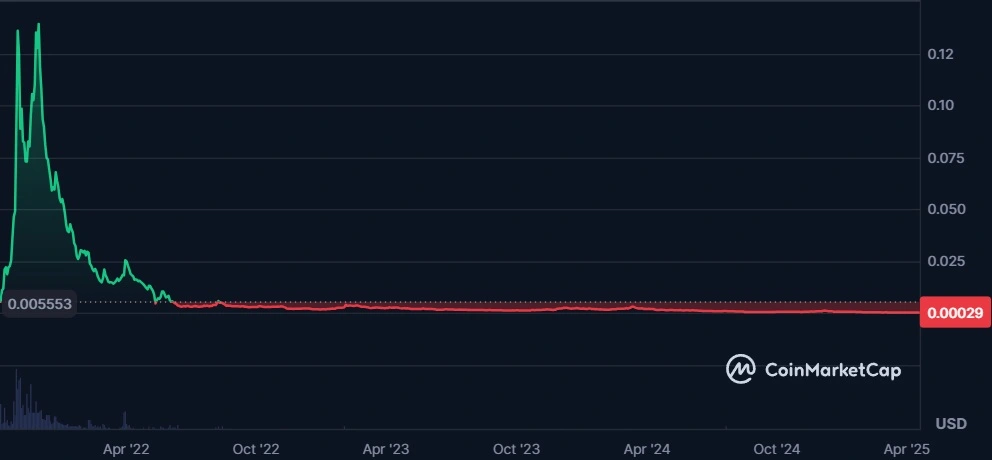
At the center of it all is $BLOK, the native token that fuels everything inside Bloktopia:
- Buying and selling ReBloks (virtual real estate units)
- Purchasing AdBloks (digital ad spaces with real exposure)
- Participating in governance through DAO voting
- Staking and earning rewards
$BLOK isn’t just a token — it’s the fuel of an entire digital ecosystem.
Not Just Play — Real Education, Networking, Ownership
What sets Bloktopia apart? It’s not trying to be the next Fortnite or a pixel playground. This is a metaverse made for crypto users, builders, and believers.
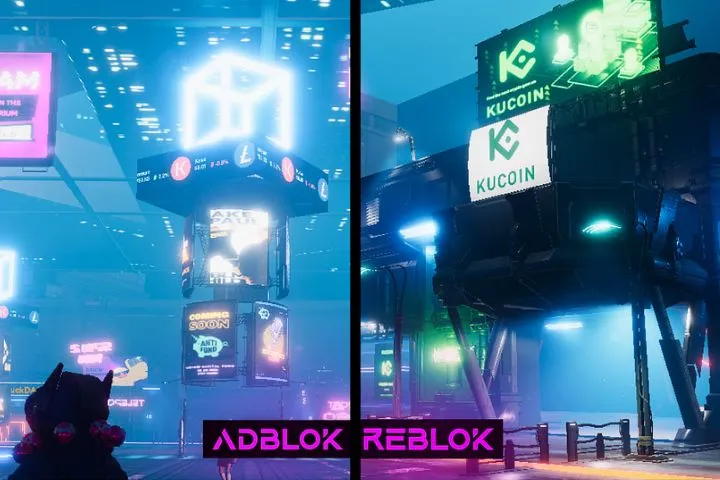
Think:
- Crypto education centers with expert-led training
- Live conferences and virtual stages with industry leaders
- Web3 businesses and dApps setting up shop in digital real estate
- Networking floors where creators and investors actually meet
This isn’t fantasy. It’s functional. It’s owned by the users. And it’s already attracting top-tier partnerships with exchanges, DeFi projects, NFT artists, and influencers.
This is digital land with real economic power.
Why Bloktopia Deserves Your Attention
- 21-floor metaverse skyscraper
- Built on Polygon for speed + scalability
- Tokenized with $BLOK for ownership + transactions
- Real estate + advertising you can monetize
- DeFi, crypto education, and live events
- A platform for creators, traders, and pioneers
Price and Market Cap Comparison (as of April 2025):
- Bloktopia ($BLOK): Price: $0.0026 | Market Cap: ~$50M
- Sandbox ($SAND): Price: ~$0.50 | Market Cap: ~$1B
- Decentraland ($MANA): Price: ~$0.35 | Market Cap: ~$600M
Takeaway: BLOK is the most undervalued by far. It has the smallest market cap and lowest token price, yet shows signs of a comeback and active development.
Why $BLOK Has the Highest Upside Potential
- Still early: BLOK is trading 90% below its ATH, making it a potential 10x opportunity.
- Strategic partnerships: Polygon-backed, tied to KuCoin, Avalanche, Animoca Brands.
- Niche focus: Targets the crypto-native audience with a unique value proposition.
- Passive income: Holders can benefit from ad revenue, staking, and metaverse real estate.
Where to buy SAND, MANA and BLOK
You can buy SAND, MANA and BLOK on KuCoin with discounts. It’s one of the easiest and safest exchanges for new investors.
Comparison
The metaverse landscape is rapidly evolving, with The Sandbox, Decentraland, and Bloktopia each staking out unique territory.
- The Sandbox leads in gamification and mainstream adoption, powered by high-profile partnerships with brands like Gucci, Snoop Dogg, and Adidas. With tools like Game Maker and VoxEdit, it empowers creators and attracts traditional gamers into Web3. It’s polished, structured, and increasingly integrated with mobile and social platforms.
- Decentraland carved out a name as the first decentralized virtual world, offering open land ownership and DAO governance. Its strength lies in social events, virtual art galleries, and fashion weeks. But it’s been criticized for lower user engagement and outdated UX compared to newer platforms.
- Bloktopia is the most crypto-native of the three. It’s vertically built for the DeFi and Web3 crowd, featuring staking, real estate, and educational experiences in a cyberpunk skyscraper. While its user base is smaller, its token ($BLOK) is still in early stages—presenting higher volatility but massive upside potential.
| Feature | The Sandbox | Decentraland | Bloktopia |
|---|---|---|---|
| Main Focus | Gaming, Brand Experiences | Social, Culture, Art | Crypto Education & Staking |
| User Tools | Game Maker, VoxEdit | SDK, Builder Tool | Marketplace, NFT Real Estate |
| Biggest Strength | Partnerships & Gamification | DAO & Cultural Events | Passive Income for DeFi Users |
| Token Utility | $SAND for gaming/gov | $MANA for wearables/land | $BLOK for staking/real estate |
| Market Cap (2025) | ~$618M | ~$236M | ~$7M |
| Growth Potential | Stable | Moderate | High (Early Stage) |
Each metaverse serves a different user persona. Sandbox is for gamers and brands, Decentraland is for artists and explorers, and Bloktopia is for crypto natives and traders.
Conclusion
The metaverse isn’t a one-size-fits-all world—and that’s exactly the opportunity. The Sandbox offers a polished, gamified environment with proven traction. Decentraland remains a pioneer with a strong focus on decentralization and social interaction. Bloktopia, on the other hand, is just getting started—with a token under a penny and massive speculative potential.
For conservative investors or builders looking for stability and brand exposure, The Sandbox is a safe bet. For those who want a more social and cultural Web3 experience, Decentraland delivers. But for anyone looking to ride the next 10x–50x metaverse wave, Bloktopia is worth serious consideration.
Whether you’re a creator, investor, or curious explorer, the time to enter the metaverse is now. Diversify your exposure. Position yourself early. And remember—those who saw $SAND explode wish they’d acted sooner.
Check out this other article and discover why KuCoin stands out as one of the top crypto exchanges. Also, feel free to leave a comment if you’ve used KuCoin and share your experience.
Disclaimer: The content on this website is for informational and educational purposes only and should not be considered financial, investment, or legal advice. We are not financial advisors, and the opinions expressed here are not a substitute for professional financial guidance. Cryptocurrency investments carry significant risks, including the potential for financial loss. Always conduct your own research and consult with a qualified financial advisor before making any investment decisions. We are not responsible for any financial losses or damages resulting from the use of the information provided on this site. This post contains affiliate links and we may earn a commission if you sign up, at no extra cost to you.
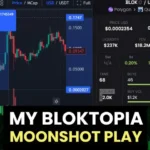
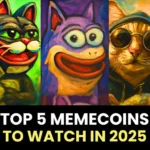

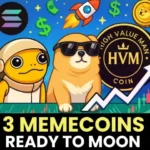
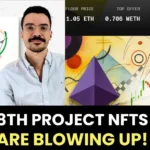
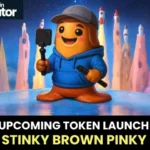
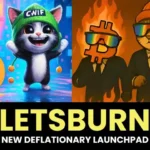
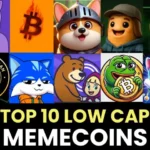
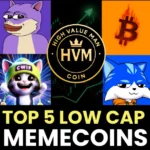
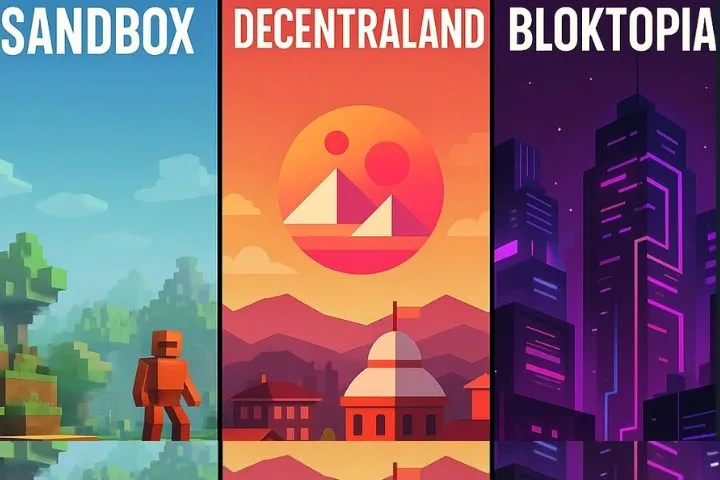
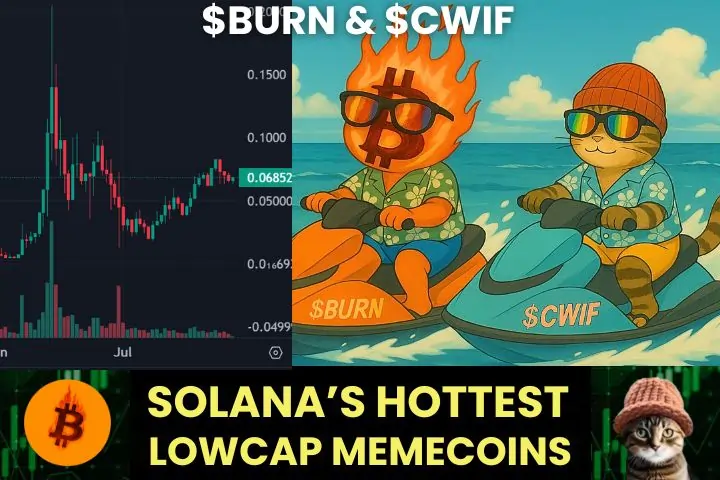
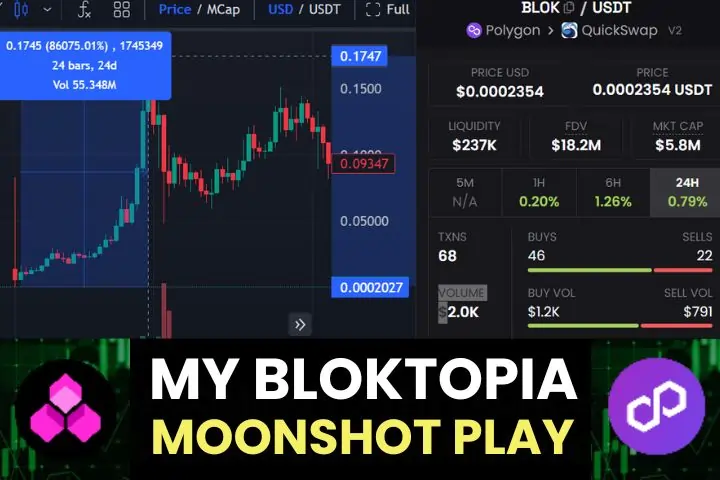
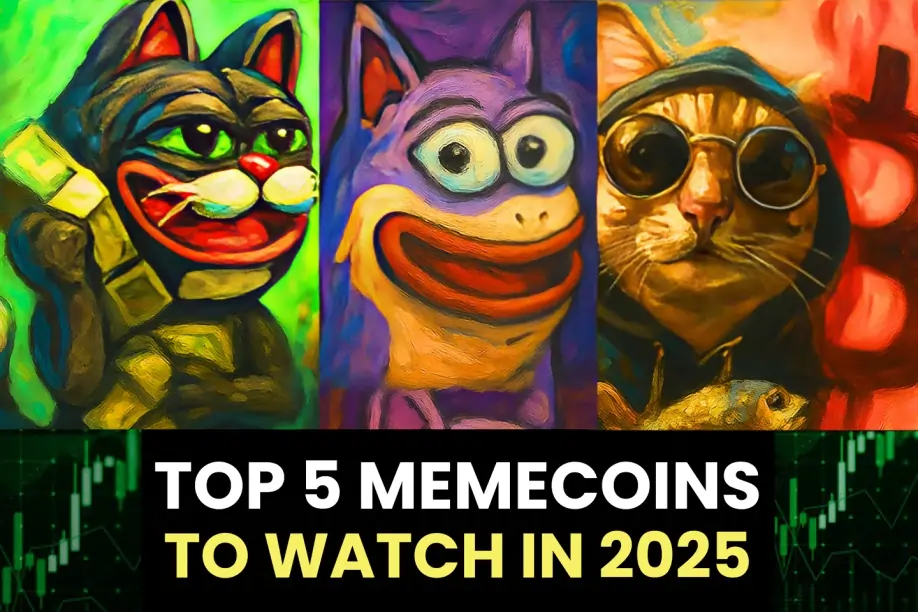
Post Comment